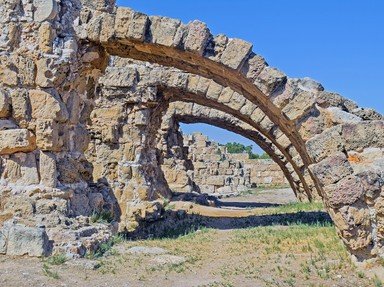Quiz Answer Key and Fun Facts
1. The land of the pharaohs, Egypt - your mission is to steal an ancient artifact from Tutankhamun's tomb. Where exactly would you find his tomb?
2. Ethiopia - your destination is a small Christian church, St. Mary of Zion, where some believe the Ark of the Covenant may be hidden. In which city will you find this church?
3. Middle East - you want to add some Nabataean art to your collection and make your way to the the city of Petra. Petra is in which modern-day country?
4. Which of these is NOT in Turkey?
5. You've exhausted your stay in Turkey, especially after making off with some Trojan gold! You decide to make your way to nearby Greece in search of a lost civilisation. Some believe that a small island devasted by the eruption of a volcano was once the home of the lost civilisation of Atlantis. What's the modern name of that island?
6. Into the Middle East to the war-torn Iraq - risking life and limb, you wish to head to the tombs at Ur. But is Ur *really* in Iraq?
7. This country was the site of an intentional destruction of ancient Buddhist statues at Bamiyan, which had been carved out of the mountainside in the 5th century AD. The site is very close to the city of Kabul, which happens to be the capital of this country. Which country was home to the Buddhas of Bamiyan?
8. China - the city of Xi'an, which is home to several ancient sites. Which of these is one of them?
9. Beijing has some tombs just outside the city. Which dynasty were these tombs made in?
10. South-East Asia, Cambodia - you make your way to its most famous temple complex near the town of Siem Reap. What is the name of this famous site?
11. You jet off to the Americas. Your first stop is an Anasazi site located in Mesa Verde. In which American state is this site found?
12. South America - you decide to see one of Peru's most famous sites, a city high in the mountains. Which site would you be checking out?
13. You decide to visit a famous mountain in Brazil. What is the name of this mountain?
14. In the United Kingdom you find yourself in an old town named Glastonbury. It is sometimes said that a great figure of English legend is buried in an abbey here. But who?
15. Italy - this site is world-famous and was once the site of many a gladiator battle. Is this site known as the Colosseum?
Source: Author
DigitalAngel
This quiz was reviewed by FunTrivia editor
bloomsby before going online.
Any errors found in FunTrivia content are routinely corrected through our feedback system.
